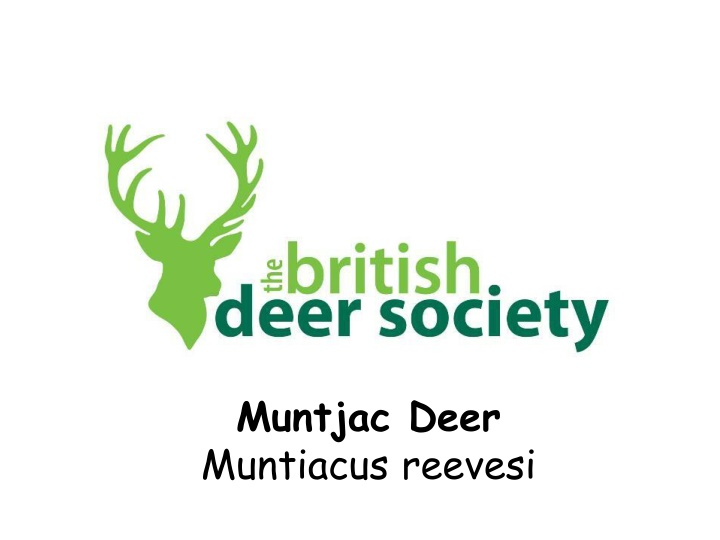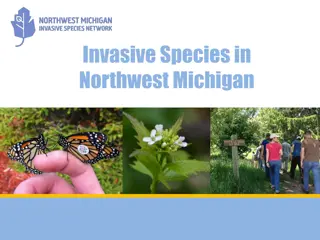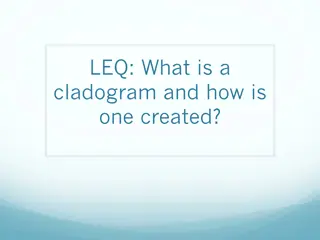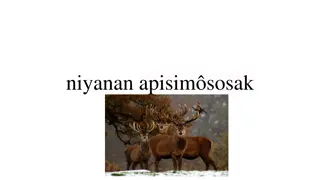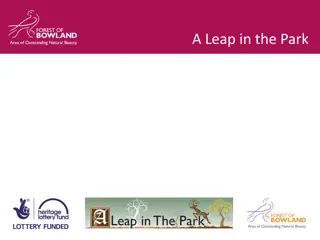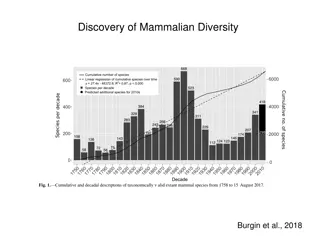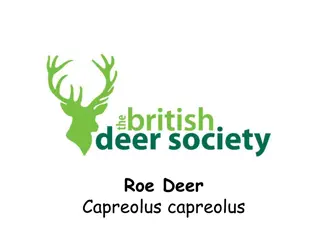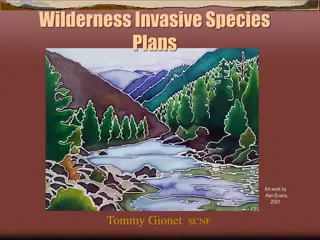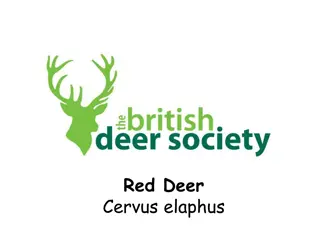Discover the Fascinating Muntjac Deer - A Unique Species in the British Isles
Learn about the Muntjac deer, a small and adaptable species rapidly spreading across Great Britain. Introduced from China to Woburn Park, they have unique features like scent glands and hunched appearance. Find out about their habitat, physical characteristics, and more.
Download Presentation

Please find below an Image/Link to download the presentation.
The content on the website is provided AS IS for your information and personal use only. It may not be sold, licensed, or shared on other websites without obtaining consent from the author.If you encounter any issues during the download, it is possible that the publisher has removed the file from their server.
You are allowed to download the files provided on this website for personal or commercial use, subject to the condition that they are used lawfully. All files are the property of their respective owners.
The content on the website is provided AS IS for your information and personal use only. It may not be sold, licensed, or shared on other websites without obtaining consent from the author.
E N D
Presentation Transcript
Muntjac Deer Muntiacus reevesi
There are six species of wild deer in the British Isles. Chinese Water Deer Muntjac Fallow Deer Roe Deer Red Deer Sika Deer
All About Muntjac Deer Muntjac Deer were brought from China to Woburn Park in the early 20th century. Some were released into the wild and some escaped.
What do I look like? Muntjac are a small deer that are rapidly spreading across Great Britain. They are very adaptable and may soon be living near you!
What do I look like? A Muntjac deer has a hunched appearance with a long tail and short legs. It is Labrador sized.
What do I look like? Muntjac Deer have scent glands on their face. I haven t been hurt!
What do I look like? A male (boy) Muntjac deer is called a buck. What do you see on top of the buck s head?
What do I look like? ANTLERS The buck s antlers fall off or are cast between May and July. The new set start to grow very soon and are called in velvet .
What do I look like? A female (girl) Muntjac deer is called a doe. The Doe has a triangular or kite shape on her face. Does a doe have antlers?
What do I look like? The Buck has small antlers and tusks. Does don t have antlers. Both the Buck and Doe have dark face patches.
Lifestyle facts. Feeding Muntjac Deer are browsers. They like a little of this and a little of that including shoots, leaves, buds, garden plants and bulbs as well as berries and nuts.
Lifestyle facts. Muntjac are solitary or found in buck/doe pairs, or with their young.
Lifestyle facts. Muntjac have tiny feet. They leave small prints called slots. You can compare them with the 50 pence piece.
Acknowledgements Thank you to everyone who assisted with this project, in particular: Suzie Moore, Education Development Officer, New Forest Centre George Trebinski, Wildlife Photographer and all other photographers The BDS Education Committee Dorothy Ireland, Charles Smith Jones, Sarah Stride, and John Johnson Contributors to the British Deer Society Image Library Anne Bellerby, Jo Mahler, Campbell McInnes, Simon Crook, Tony Charlton, Bob Holmes, Glyn Ingram
Championing the future for British deer www.bds.org.uk 01425 655434 The Walled Garden, Burgate Manor, Fordingbridge, Hampshire, SP6 1EF
